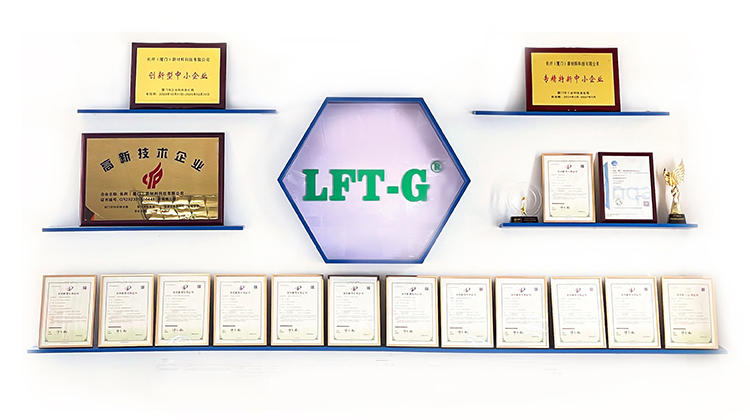Known for its dimensional stability, low moisture absorption, high strength, stiffness, and chemical, UV, and thermal resistance.
Known for its dimensional stability, low moisture absorption, high strength, stiffness, and chemical, UV, and thermal resistance.
item no.:
PBT-NA-LGFPayment:
Discussedproduct origin:
ChinaColor:
Natural color or Customizedshipping port:
XiamenLead Time:
2-10 working days

|
Characteristic |
Unit |
Test Method |
Property Value |
|
Specific Gravity |
g/cm³ |
ASTM D-792 |
1.53 |
|
Molding Shrinkage |
% |
ASTM D-955 |
0.1-0.3 |
|
Tensile Strength |
MPa | ASTM D-638 | 145 |
|
Tensile Modulus |
MPa | ASTM D-638 | 10345 |
|
Tensile Elongation |
% |
ASTM D-638 |
2.0-3.0 |
|
Flexural Strength |
MPa | ASTM D-790 | 226 |
|
Flexural Modulus |
MPa | ASTM D-790 | 9785 |
|
Notched Izod Impact |
KJ/m2 |
ASTM D-256 | 215 |
|
Notched Charpy Impact |
KJ/m2 |
ASTM D-4812 |
|
|
Deflection Temperature |
°C |
ASTM D-6482 |
For reference only
What is PBT GF30?
PBT GF30 refers to a composite material consisting of Polybutylene Terephthalate (PBT) and Glass Fiber (GF) reinforcement. PBT is a thermoplastic polyester resin known for its excellent mechanical and electrical properties, chemical resistance, and dimensional stability. Glass fibers are added to the PBT matrix as a reinforcing material to enhance its strength, stiffness, and heat resistance.
The "GF30" in PBTGF30 indicates that the composite contains 30% by weight of glass fibers. The specific percentage of glass fibers can vary depending on the desired properties and application requirements. Higher glass fiber content generally results in improved mechanical properties but may also affect other characteristics such as moldability and surface finish.
PBT GF30 composites are commonly used in various industries, including automotive, electrical, and electronics, where a combination of mechanical strength, dimensional stability, and resistance to heat and chemicals is required. Typical applications include electrical connectors, housings for electrical components, automotive parts, and structural components in various devices and equipment.
Comparison of PBT-LGF vs. PET-LGF
Mechanical Properties:
*PBT: When reinforced with long glass fibers, PBT exhibits excellent stiffness, toughness, and dimensional stability. It has a high strength-to-weight ratio and good impact resistance. However, its mechanical properties, such as tensile strength and rigidity, are generally slightly lower than those of PET.
*PET: PET reinforced with long glass fibers tends to have higher tensile strength and rigidity compared to PBT. This makes it preferable for applications requiring maximum structural integrity, such as in automotive components.
Thermal Properties:
*PBT: PBT has a lower glass transition temperature (Tg) and melting point compared to PET, which limits its use in high-temperature environments. However, its thermal stability is enhanced by long glass fiber reinforcement, making it suitable for moderate thermal applications.
*PET: PET has a higher glass transition temperature and melting point, which provides better thermal stability than PBT. This makes PET more suitable for applications that require long-term performance at higher temperatures.
Electrical Insulation:
*PBT: PBT is known for its excellent electrical insulation properties, even when filled with long glass fibers. This makes it a preferred choice in the electronics industry for components like connectors and insulators.
*PET: While PET also provides good electrical insulation, PBT generally has an edge in this area, particularly in environments with higher electrical requirements.
Chemical Resistance:
*PBT: PBT offers good chemical resistance, particularly to solvents, oils, and fats. It is also resistant to hydrolysis, which is critical in humid or wet environments.
*PET: PET has superior chemical resistance, especially to acids and bases. However, it is more susceptible to hydrolysis than PBT, which can be a disadvantage in environments with high moisture.
Moldability:
*PBT: PBT has excellent moldability and faster crystallization rates, allowing for shorter cycle times during the molding process. This makes it more cost-effective for mass production.
*PET: PET has slower crystallization rates, which can lead to longer molding times. However, its better dimensional stability can be an advantage in producing complex shapes and fine details.
Applications:
*PBT: Due to its balanced mechanical and thermal properties, PBT is widely used in automotive parts, electrical components, and consumer electronics.
*PET: The higher tensile strength and rigidity of PET make it suitable for more demanding applications, such as structural automotive parts, high-performance fibers, and certain packaging solutions.
Xiamen LFT has capabilities to provide assistance to you throughout an entire product launch - through product discussion, performance analysis, composite selection, composite pellet production, after-sales tracking. In addition, we provide guidance on injection molding techniques
